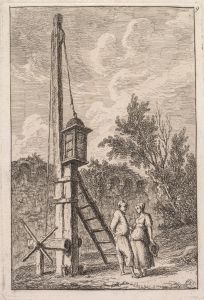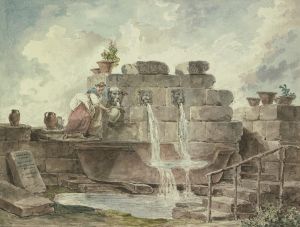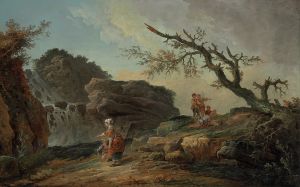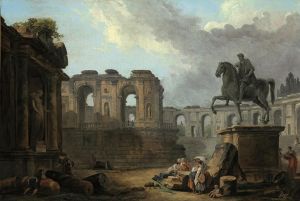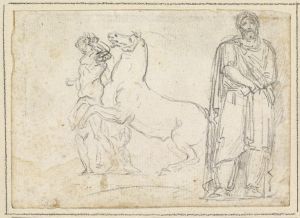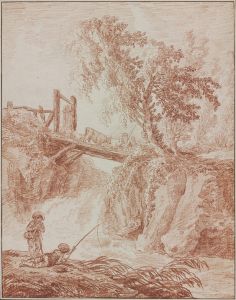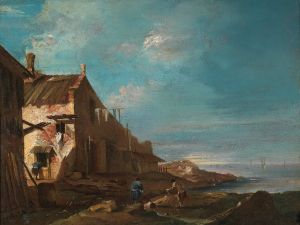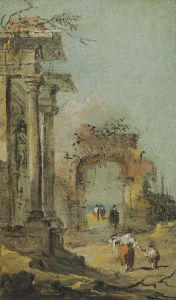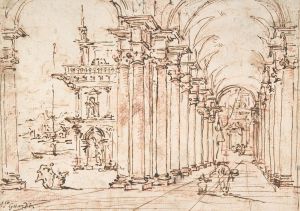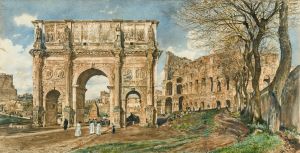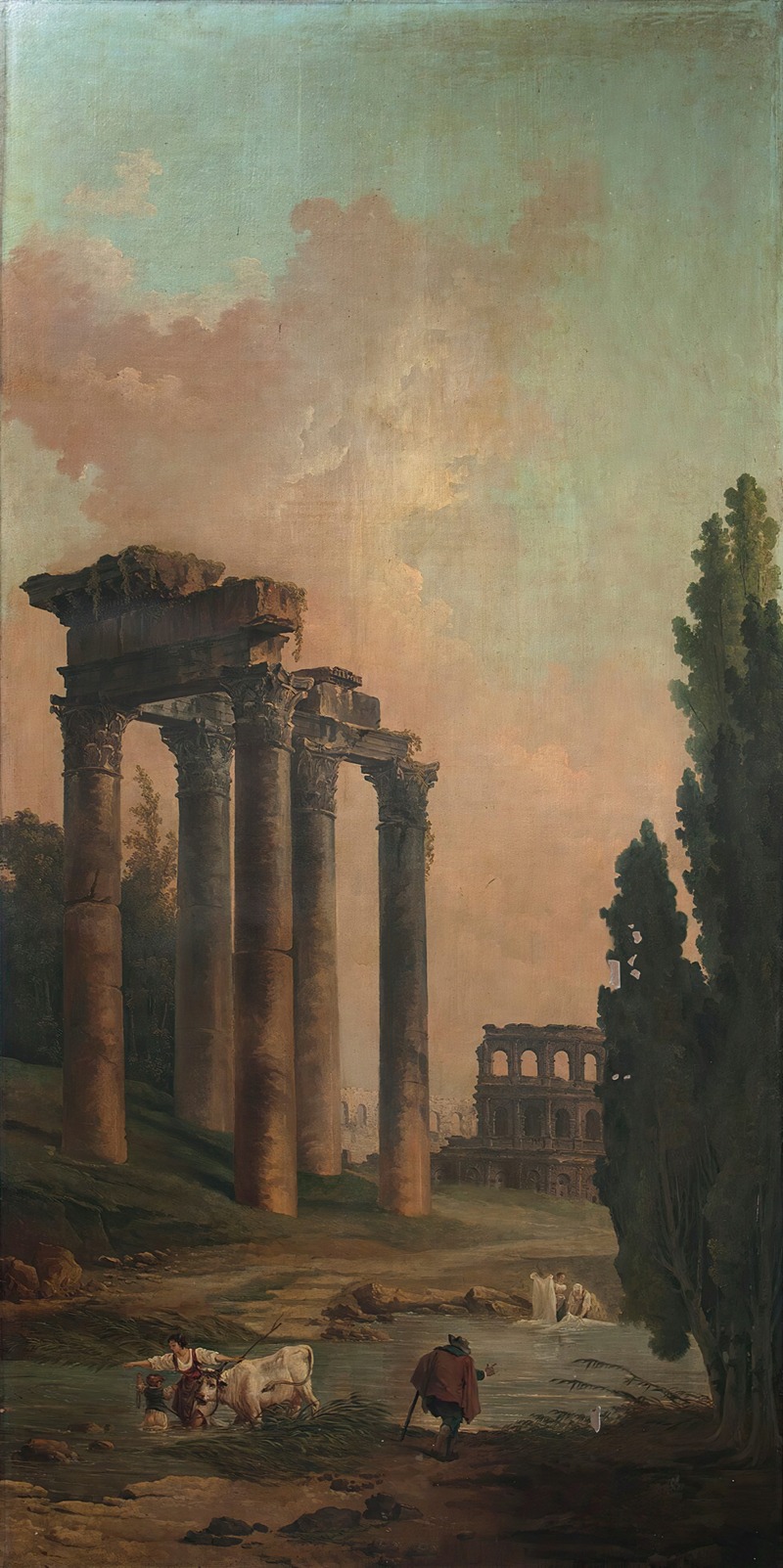
Architectural Capriccio with ruins of the Temple of Saturn and the Colosseum in the background
A hand-painted replica of Hubert Robert’s masterpiece Architectural Capriccio with ruins of the Temple of Saturn and the Colosseum in the background, meticulously crafted by professional artists to capture the true essence of the original. Each piece is created with museum-quality canvas and rare mineral pigments, carefully painted by experienced artists with delicate brushstrokes and rich, layered colors to perfectly recreate the texture of the original artwork. Unlike machine-printed reproductions, this hand-painted version brings the painting to life, infused with the artist’s emotions and skill in every stroke. Whether for personal collection or home decoration, it instantly elevates the artistic atmosphere of any space.
"Architectural Capriccio with Ruins of the Temple of Saturn and the Colosseum in the Background" is a painting by the renowned French artist Hubert Robert, who was active during the 18th century. Hubert Robert, often referred to as "Robert des Ruines" due to his fascination with depicting ruins, was a prominent figure in the genre of capriccio, which involves the imaginative combination of architectural elements in a fantastical setting.
This particular painting exemplifies Robert's skill in blending real and imagined architectural features to create a scene that is both evocative and timeless. The artwork features the ruins of the Temple of Saturn, one of the ancient structures located in the Roman Forum, alongside the iconic Colosseum, a symbol of ancient Rome's architectural prowess. By placing these two significant Roman landmarks together, Robert creates a dialogue between the grandeur of Rome's past and the passage of time, a common theme in his work.
Hubert Robert was born in Paris in 1733 and spent a significant portion of his early career in Italy, where he was deeply influenced by the ruins of ancient Rome. His time in Italy, particularly in Rome, was crucial in shaping his artistic vision. He became a member of the French Academy in Rome, which allowed him to study and sketch the ruins extensively. This experience provided him with a rich visual vocabulary that he would draw upon throughout his career.
The painting is characterized by its dramatic use of light and shadow, which highlights the textures and details of the crumbling stone structures. Robert's adept handling of light not only enhances the three-dimensionality of the ruins but also imbues the scene with a sense of nostalgia and romanticism. The inclusion of figures in the foreground adds a narrative element to the composition, inviting viewers to ponder the relationship between humanity and the remnants of history.
Robert's work often reflects the 18th-century European fascination with antiquity and the sublime. His paintings were popular among collectors and art patrons who were captivated by the romantic allure of ancient ruins. "Architectural Capriccio with Ruins of the Temple of Saturn and the Colosseum in the Background" is a testament to Robert's ability to evoke the grandeur and decay of ancient civilizations, a theme that resonated with the Enlightenment ideals of his time.
Throughout his career, Hubert Robert produced numerous paintings and drawings that explored similar themes. His works are characterized by their meticulous attention to architectural detail and their ability to convey a sense of timelessness. Robert's influence extended beyond his lifetime, as his paintings continued to inspire artists and architects who were drawn to the romantic and picturesque qualities of ruins.
Today, Hubert Robert's paintings are held in high esteem and can be found in major art collections around the world. His ability to capture the beauty and melancholy of architectural decay has secured his place as one of the foremost painters of ruins in art history. "Architectural Capriccio with Ruins of the Temple of Saturn and the Colosseum in the Background" remains a significant example of his work, showcasing his mastery of the capriccio genre and his enduring fascination with the remnants of the past.





